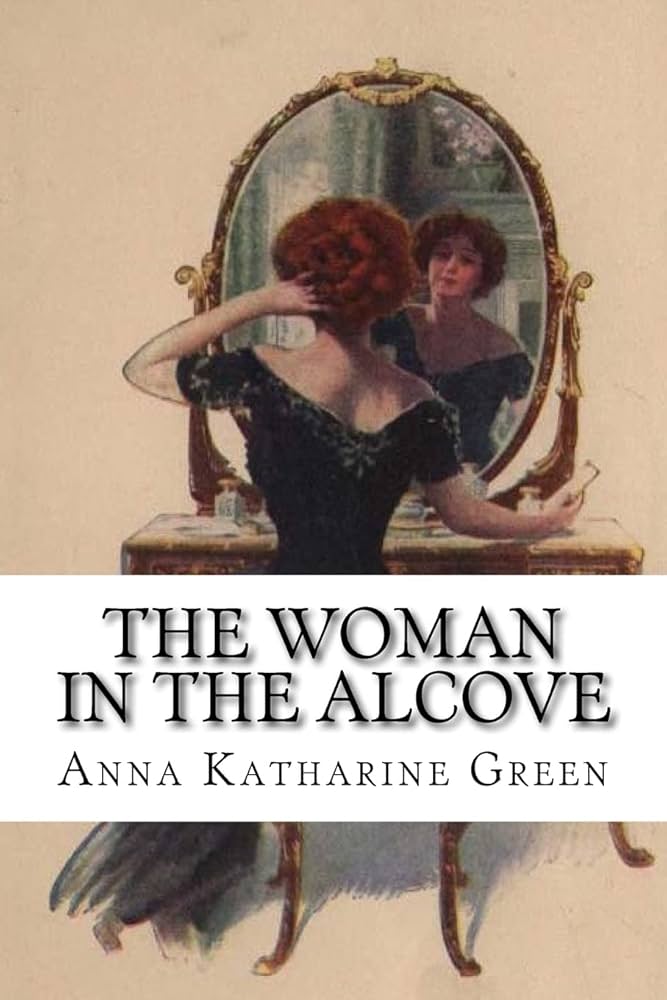Chapter XXI — The woman in the Alcove
byChapter XXI — The woman in the Alcove opens with the narrator caught in a quiet storm of realization. After Mr. Grey’s exit, doubt gnaws at what once felt like certainty. The narrator, who once saw in Miss Grey a figure of suspicion, now begins to grasp the depth of the young woman’s loyalty and love for her father. This growing awareness makes prior assumptions feel fragile, even misguided. Their investigation into Mrs. Fairbrother’s murder, once so focused on uncovering guilt through cold deduction, now intersects with a growing emotional complexity. The narrator begins to see that truth isn’t always found in suspicion—it can hide just as easily in misread trust.
The arrival of Miss Grey’s request to write a note offers a moment of testing—a quiet, understated crossroad. Her willingness feels sincere, even casual, but to the narrator, the stakes could not be higher. With trembling anticipation, the narrator compares the fresh handwriting sample to the mysterious note once believed to tie Miss Grey to the crime. The letters tell their own story. They differ entirely, striking a deep blow to the narrator’s central theory. What had seemed like damning evidence now looks more like coincidence, or worse, a terrible mistake. This shift doesn’t bring relief—it introduces chaos. If Miss Grey is innocent, then the web of evidence must be re-woven from the start.
Still, even as doubt deepens, the narrator feels pulled forward by duty. A test remains, one with no easy path: the stiletto, that narrow blade of death, must be used as bait. Planted near Mr. Grey at lunch, its presence will serve as silent accusation, waiting to provoke a reaction that might confirm guilt or dispel it forever. The choice to carry out this ruse comes at great personal cost. If it fails, it might ruin trust, or worse, reveal a truth more painful than expected. But for the narrator, the drive to know outweighs the comfort of assumptions. Truth must be pursued—even if it shatters relationships built on false perception.
The moral weight of this act is not lost on the narrator. To accuse silently, without confrontation, feels cowardly. Yet, to confront directly might close doors forever. So, the stiletto becomes more than a tool—it is a symbol of inner torment. Can justice be served through deception? Does the end justify this silent gamble? These questions tighten around the narrator as the moment approaches, binding them in a knot of ethical tension. Every choice feels costly, every path shadowed by consequences not yet known.
As the stiletto is positioned and the test begins, the room shifts. Small gestures become loaded, every glance scrutinized, every breath weighted with implication. Mr. Grey, unaware of the trap, becomes a study in calm. His hands never tremble. His expression remains unreadable. The narrator watches with intensity, desperate for a sign—anything—that might confirm or dissolve doubt. But as the scene unfolds, what emerges is not confirmation, but ambiguity. No reaction is clear enough to claim victory, no gesture damning enough to seal fate.
In this uncertainty, the narrator sees the limits of logic. The heart, unpredictable and vulnerable, has its own truths. Miss Grey’s devotion, Mr. Grey’s poise, the false trail of handwriting—all remind the narrator that human nature resists simple analysis. The mystery remains, but its shape has changed. It is no longer about solving a puzzle with pieces of evidence, but about understanding the fragile, shifting lines between guilt, perception, and intent. What once seemed straightforward has become murky. And in that murk, the narrator stands alone, holding a blade that has answered no questions, only cut deeper into doubt.
The chapter ends not with resolution, but with reflection. Trust, once broken, is not easily mended. And suspicion, once planted, grows roots deep into the soul. The narrator, once confident in method and motive, now faces a more daunting task—not to accuse, but to see clearly. And as the shadow of the alcove lingers, the true weight of their search begins to settle.


